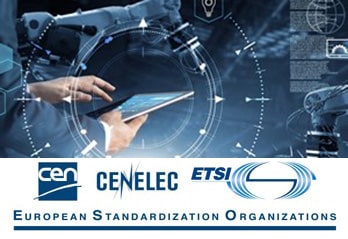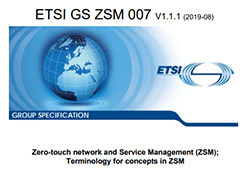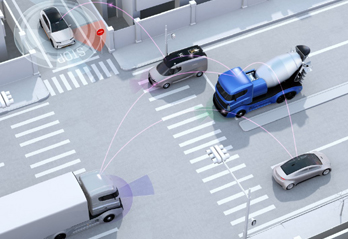Industrial data has become one of the top strategic priorities for European and international industry in the recent years. Well managed and duly exploited, industrial data bring a significant competitive edge to businesses and can greatly improve overall efficiency, be it by supporting core processes or by providing a new source of insights.
In this data-driven era, industrial data play an essential role in building the foundation of the next wave of digitization in Europe. For this reason, it is key to the success of a harmonised Single Market and European competitiveness in the global market, but also for the success of the twin transition (green and digital) at the heart of the EU policy agenda.
Industrial data is of ever-increasing importance for companies in Europe and the world, and particularly so in the context of the digitization of industry. On this topic, on 28 Sept, CEN, CENELEC and ETSI co-organised an online stakeholders’ workshop dedicated to exploring how standards can support the industrial data value chain.
ETSI Releases two Technical Reports to Support US NIST Standards for Post-Quantum Cryptography
In 2016 the US National Institute of Standards and Technology (NIST) announced their intention to develop new standards for post-quantum cryptography. They subsequently initiated a competition-like standardization process with a call for proposals for quantum-safe digital signatures, public-key encryption schemes, and key encapsulation mechanisms. NIST have stated that they intend to select quantum-safe schemes for standardization at the end of the current, third round of evaluation. The ETSI CYBER Quantum Safe Cryptography committee is pleased to announce the publication of two Technical Reports that give descriptions of each of the candidate schemes in the third round of the NIST standardization process:
-
ETSI TR 103 616 V1.1.1 (2021-09) "Quantum-Safe Signatures"
-
ETSI TR 103 823 V1.1.1 (2021-09) "Quantum-Safe Public Key Encryption and Key Encapsulation"
The descriptions contained in the reports are not intended to be used as substitutes for the detailed specifications submitted to the NIST process. Instead, the emphasis is on providing unified, concise descriptions of each of the schemes, using consistent notation and terminology, to facilitate understanding and easy comparison.
ETSI is pleased to announce the release of three major specifications and reports developed by its Zero-touch network and Service Management (ZSM) group. ETSI GS ZSM 003, defines end-to-end network slicing management and orchestration architecture blueprint and solutions, and ETSI GS ZSM 009-1 specifies the enablers for closed-loop automation. The general security aspects related to the ZSM framework and solutions and potential mitigation options are introduced in the ETSI GR ZSM 010.
-
ETSI GS ZSM 003 defines an architecture blueprint and solutions for zero-touch management and orchestration of end-to-end, cross-domain network slicing – supporting both fulfilment and assurance processes. Network slicing spans different technological domains, from the User Equipment (UE) through, for example, the access network, transport network, core network, to the application.
-
ETSI GS ZSM 009-1 specified “Governance” services that allow the creation, execution, and life-cycle management of a closed loop, as well as the steering of its behavior. A closed loop enables the continuous optimization and adaption of network and resource utilization as well as automated service assurance and fulfilment.
ETSI GR ZSM 010 identifies potential security threats related to the ZSM framework and solutions, and proposes mitigation options that should be considered by the ZSM specifications to ensure that the automated processes are secured and deliver the intended business outcomes.
ETSI’s Industry Specification Group on Encrypted Traffic Integration (ISG ETI) has concluded the early part of its work, by identifying problems arising from pervasive encrypted traffic in communications networks. In the group’s first report, ETSI GR ETI 001, entitled Encrypted Traffic Integration (ETI); Problem Statement, ISG ETI identifies the impact of encrypted traffic on stakeholders and how these stakeholders' objectives interrelate. The rise of the use of encryption places networks and users at risk, whilst offering promises of security.
Encryption protects traffic flowing through a network from unauthorized inspection. Nevertheless, encryption does not protect the communicating end points from attack and reduces the ability of firewalls, in combination with other network management systems, to remove malicious traffic. Without being over-dramatic, the rise of a pervasive encryption model allows many of the worst elements of societal and human behavior to go unobserved, because trusted networks are not able to help to protect users. The role of ETSI ISG ETI is to enable all the positive attributes of pervasive encryption to be enhanced, whilst allowing the networks to operate. This requires a deeper understanding of the problem, as evidenced in the GR ETI 001.
The ETSI MEC Industry Specification Group (ETSI ISG MEC) has just released a new Group Report ETSI GR MEC 0035 to enable inter-MEC system deployment and MEC-Cloud system coordination. This Report was motivated by the mobile network operators’ interest in forming federated MEC environments and enabling information exchange in a secure manner, in the event that MEC platforms or applications belong to different MEC systems.
ETSI GR MEC 0035 analyses eight use cases that require inter-system coordination, including those in multi-mobile network operators’ (MNOs) environments. Recommendations, evaluations and possible technical solutions to solve key issues are issued for each use case. Two use cases make recommendations to achieve V2X service continuity considering a typical MEC federation scenario of V2X services, in a MEC-system environment with multiple operators and multiple equipment manufacturers. Another, use case describes a location-based immersive Augmented Reality game where a MEC federation can serve as a solution to limitations in providing an interactive AR application with users connected via different mobile operators. Additional use cases include:
Download the full Report by following this link: ETSI GR MEC 0035










